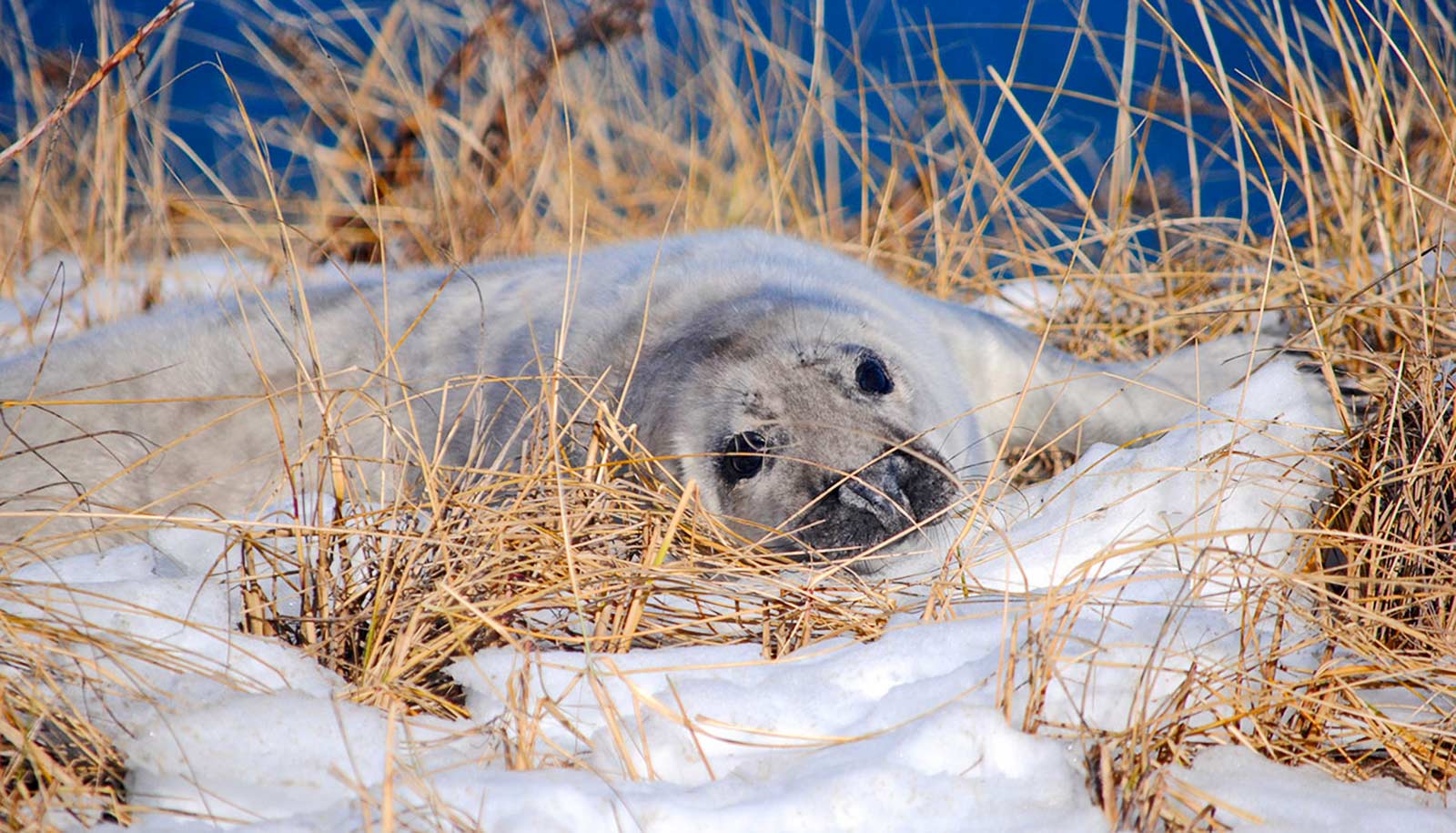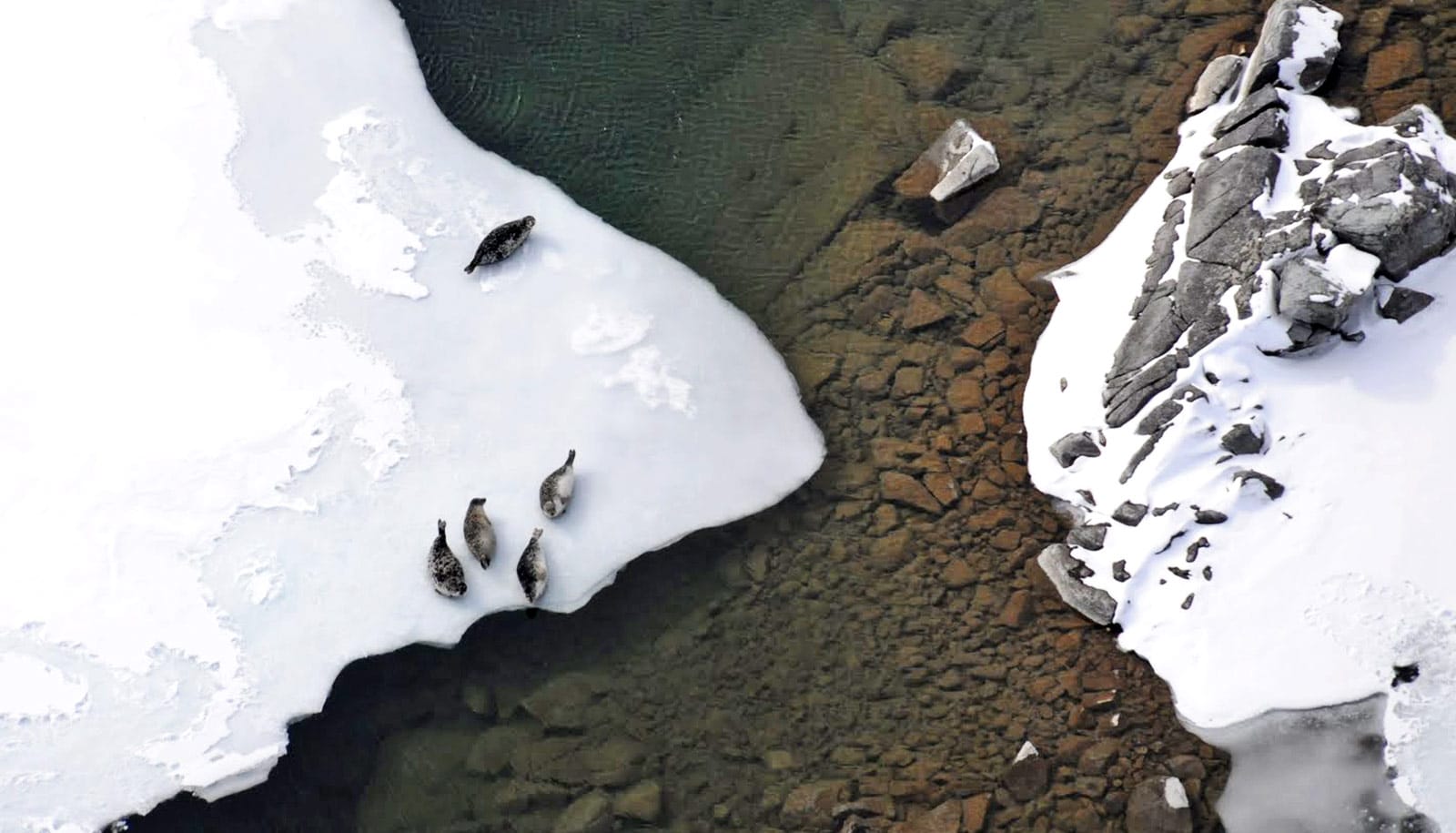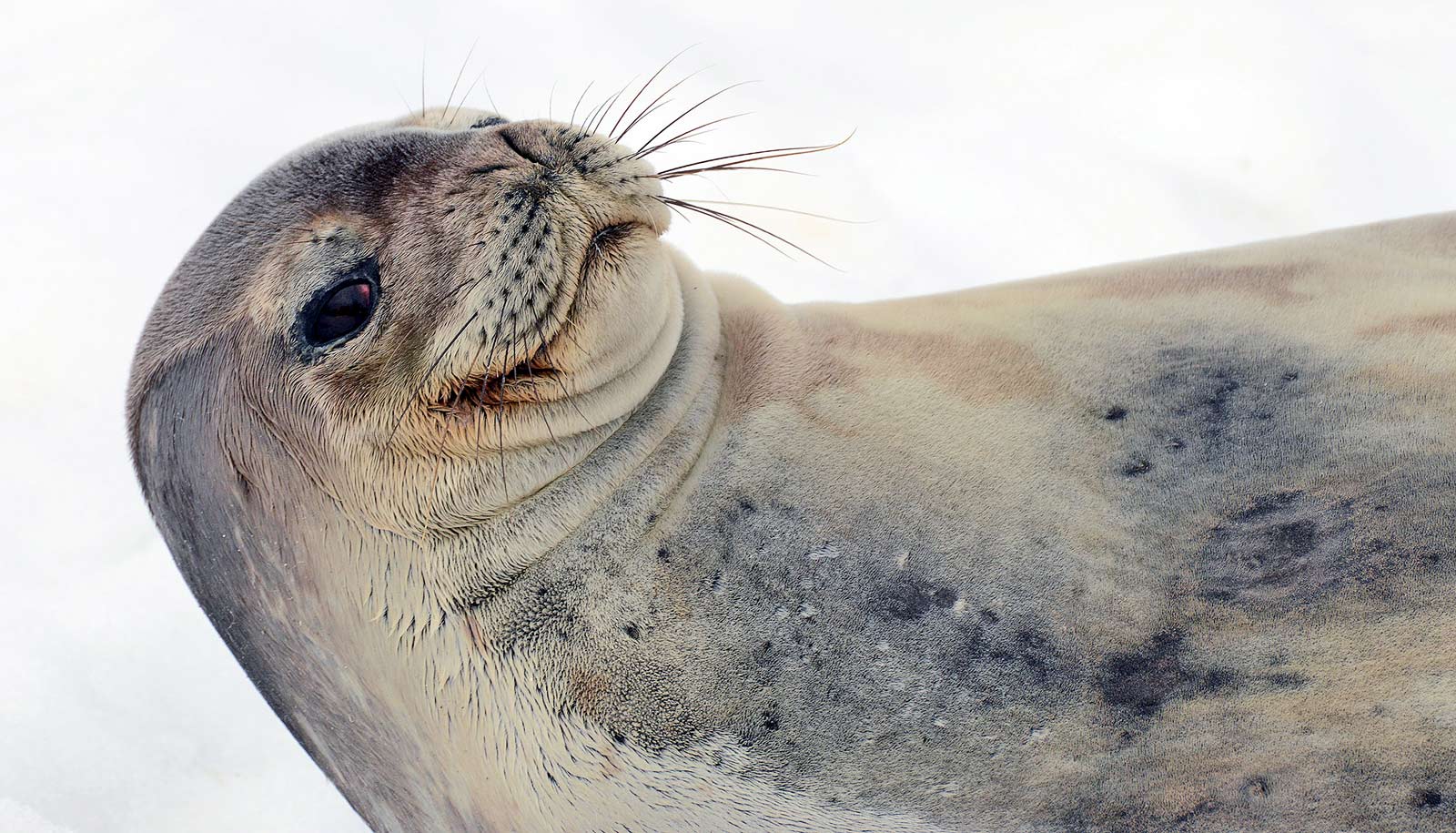New research clarifies why phocine distemper virus, which affects seals along the North Atlantic coasts of North America and Europe, is much more destructive in one location than the other.
Phocine distemper virus (PDV) is a respiratory illness that affects seals. Many animals have their own version of a morbillivirus, which causes measles in people, rinderpest in cattle, and canine distemper virus in dogs, wolves, and coyotes.
PDV was first recognized in the late 1980s, when an outbreak among harbor seals on the European Atlantic coast claimed 23,000 seals. Another outbreak in 2002 caused the deaths of 30,000 European harbor seals. Experts estimated that each of those outbreaks killed approximately half the seal population at the time.
But something curious happens when PDV affects seals along the North American Atlantic coast. Instead of a lot of fatalities, the same virus kills only a small fraction of seals.
“In the same type of outbreaks in US and Canadian waters in 2006 and 2018, we estimate only about 2% of gray and harbor seals were affected. That’s a major difference,” says Kaitlin Sawatzki, a postdoctoral researcher in the Runstadler Lab in the department of infectious disease and global health at Cummings School of Veterinary Medicine. “And it’s the underpinning of a major question, which is, why?”
Sawatzki and scientist Wendy Puryear are the authors of a new study in the Proceedings of the Royal Society B with several insights that may lead to answers.
Viruses in the North Atlantic
“There is just something about the North Atlantic,” says Puryear. “Historically, a handful of viral infections have occurred in marine mammals in the North Atlantic—influenza, PDV, herpes, and others. To date, there’s never been a viral outbreak in marine mammals in the Pacific.”
Since the Marine Mammal Protection Act (MMPA) was enacted in 1972, species such as gray, harbor, and harp sea, whose populations had been in decline, saw numbers rebound—in some cases exponentially, especially on the US side of the North Atlantic. Sawatzki is quick to point out that rebounding seal populations does not mean overpopulation. “We’re reaching the historical levels of where the number of seals should be, not more than they should be,” she says.
Part of the equation lies in population numbers of each species on the North American and European coasts. North American seal populations have increased over the last few decades and reached a point where they can sustain circulation of the virus, so PDV has stayed and continues to circulate. As their numbers rise, so does the carrying capacity for disease.
But on the European coast, where the gray seal population has not yet rebounded as robustly, the virus has fewer opportunities to continue to circulate. It’s similar to SARS-CoV2 in that when a lot of people are together, it’s easier for the virus to spread.
“We have interplay between gray, harbor, and harp seals, which doesn’t exist in the Pacific—and we have a big enough population to maintain circulation of PDV. The virus along the North American coast has evolved to a less pathogenic form, and we think this is a precursor to what we’re going to see in other parts of the globe,” says Puryear.
On the American side of the Atlantic, harbor and gray seals often mix together and haul-out in the same area. This happens less frequently along the European coast, but Puryear predicts that more overlap will occur as both species’ populations increase.
“Harp seals are at least one of the primary reservoirs where PDV circulates, and when an animal is a longstanding reservoir for a virus, there’s a co-evolution that happens where they aren’t hit very hard as far as getting sick and dying from it. They may have PDV, but they live with it just fine,” says Puryear.
Meanwhile, harbor seals are not so sturdy and succumb more easily to disease, says Sawatzki, while gray seals fall somewhere in between. Affected animals tend to have runny noses, gooey eyes, or neurological symptoms such as head tremors or seizures.
Seals in hotter water
In the 50 years since the MMPA, the world has changed around the seals, with climate change, melting ice in the Arctic, and lots of different pollutants dramatically affecting the availability of prey and habitat. This is especially true in the North Atlantic, including the Gulf of Maine, which is the fastest-warming body of water on Earth. As seal numbers increase in this altered environment, migration patterns also change.
“For example, harp seals are considered ice seals and generally live in the Arctic, though they are coming down into the lower latitudes more and more, presumably in search of prey and habitat, which may be becoming scarce in higher latitudes,” says Puryear.
She says a colleague in Delaware reports frequent sightings of harp seals, which is surprising given that Delaware is hundreds of miles farther south than harp seals usually swim, historically. Obviously, seals can’t replicate an iceberg habitat along the North Atlantic coast of the US. But while searching for a suitable substitute, seals are generally under physiological stress, which causes them to be led astray. For example, harp seals along the North Atlantic US coast are known for eating sand as they presumably search for snow with less success than they have further north.
In addition to loss of habitat, melting Arctic ice opens new passageways with the potential for transmitting PDV into the Pacific, where seals and other marine life previously have not been exposed and do not have preexisting immunity, much as with SARS-CoV-2 and humans. This combination of circumstances brings the possibility of many seal deaths.
As seasons change and sea ice retreats, there’s a lot of activity and interplay between marine mammals as they mingle and swap viruses. “The seals haul out together, they’re nose to nose, they’re fighting, and there’s a lot of close contact,” says Sawatzki. “They hang out in dense piles on top of each other with hundreds of animals that are right up in each other’s business.”
It’s humans’ fault
PDV provides an example of how multiple moving pieces at a global scale can affect the spread of virus from one part of the planet to another and from one species to another. Sawatzki and Puryear recently coauthored a second paper in the Proceedings of the Royal Society B showing that PDV likely developed from canine distemper virus, and the two conditions share a strong link.
Neither disease is zoonotic, so an infected animal cannot transmit the disease to a human. However, it could potentially affect our companion dogs. Puryear points to Cape Cod, where beach coyotes scavenge on seal carcasses and could, in theory, pick up the canine version of the disease and transmit it to local dogs.
Even though PDV can’t make humans sick, Sawatzki says that’s no excuse for ignoring an issue that exists largely because of human behavior. “Humans are the linchpin in this,” she says, referring to climate change. “We did this to seals.”
Source: Tufts University



